In 2022, U.S. development cooperation will undergo a peer review by the Development Assistance Committee (DAC) of the OECD (OECD-DAC), the standard-bearer of development cooperation that includes many of the largest providers of foreign assistance. Much has happened in U.S. political and policy circles since the last U.S. peer review, published in 2016. The peer review team, led by France and Norway, will examine U.S. aid in light of best development practices and global commitments, providing a valuable opportunity for the U.S. government and its stakeholders to take stock and inform a strategic rethink of how the U.S. can maximize its global investments and better advance its development goals and mission.
Our recent conversations with seasoned development experts and former U.S. government officials identified key areas of strength and opportunities on which the review might focus—and the U.S. should build.
Renewing US Development Leadership
President Biden and USAID Administrator Samantha Power are seeking to renew U.S. development leadership through action on several pressing and frontier issues, such as stopping the COVID-19 pandemic and improving global health security; helping developing countries adapt to the impact of climate change; promoting democratic governance and reducing corruption; and decolonizing aid through a localization agenda. These shifts away from the “America First” foreign policy of the Trump administration will be codified in a National Security Strategy due later this year, expected to show a “commitment to global development and international cooperation.”
The bipartisan consensus on global development, which has remained strong through multiple administrations, should serve the U.S. well as it pursues these objectives. This consensus has been buoyed by the strong results orientation of the Millennium Challenge Corporation (MCC) and USAID, who have systematically used field-based evidence to refine measurement, evaluation, and adaptive learning.
The global development challenges identified by the administration require a scale of financing that goes well beyond official development assistance (ODA), and the DAC should consider the U.S. experience in developing partnerships with the private sector, including blending aid with the U.S. International Development Finance Corporation’s (DFC) expanded authorities and capital to mobilize private investment for development purposes.
Coherence
With over 20 U.S. government agencies involved in delivering foreign assistance and a complex 60-year-old legislative foundation (Foreign Assistance Act of 1961), the coherence of U.S. government foreign assistance policies and programs is an inconsistent work in progress.
Successive administrations have been challenged in creating an effective bureaucratic structure to coordinate aid. The senior director for development, global health, and humanitarian response on the National Security staff (NSS) provides one focal point, but there is not a National Security Council (NSC) office with capacity to ensure comprehensive, ongoing coordinated action across the breadth of issues and ambitions. No overarching strategy or structure exists that brings the various policies and actors together to pursue common goals.
The Obama administration sought to strengthen whole-of-government policy coherence on global development with Presidential Policy Directive (PPD) #6, which called for a U.S. global development strategy and a standing interagency policy council, neither of which exist. There was no comparable effort in the Trump administration.
The Biden administration has elevated the USAID administrator to sit on the NSC. The expected issuance of a presidential memo on development cooperation policy provides an additional opportunity to bring rationality to the diverse array of foreign assistance programs. How it is promulgated, and the implementation of the mechanisms it calls for, will be crucial to providing a frame for driving more coherent and effective U.S. development cooperation and fulfilling its responsibilities as a global leader.
One suggestion: have the USAID administrator chair an interagency development coordinating committee, like the Development Coordinating Committee authorized by section 640B of the Foreign Assistance Act.
Sustainable Development Goals
The Sustainable Development Goals (SDGs), agreed by all member states at the U.N. in 2015, have become the lingua franca of the global development community. The U.S. is the only G-7, G-20, or OECD country not to have submitted or committed to submit a Voluntary National Review of the SDGs to the U.N.
Mention of the SDGs is absent in the interim National Security Strategy Guidance and only sparsely referenced in current development policies. The SDGs offer a meaningful way for the U.S. to integrate its strategies at the country level, enabling greater alignment with partner country development strategies by employing the common language, benchmarks, and indicators of the SDGs.
On a broader scope, emerging issues such as climate change and the COVID-19 pandemic highlight the need for a structure to align domestic and international policies and priorities that do not exist in the United States. Other DAC donors have used the SDGs to provide coherence to their development cooperation policies and programs, and make the link between domestic and international priorities. The peer review should explore how strategies built around the SDGs would bring greater coherence and international relevance to U.S. policies.
Other segments of American society—cities, businesses, investors, universities, and civil society—have been in the vanguard of global leadership in advancing the SDGs. As the Biden administration seeks to pursue a “foreign policy for the middle class,” the SDGs offer a universal starting point from which the U.S. itself must do more.
Localization
Country and local ownership remain a work in progress for the U.S. Among U.S. government agencies, the MCC has an authentic country ownership methodology, as each country partner leads in preparing the economic and social analysis that identifies the priorities and the resulting program design for its five-year compact.
Yet for most U.S. assistance, there is an inherent tension in achieving country and—especially—local ownership with a donor program structured around centrally driven initiatives, predetermined budget categories, and congressional earmarks and directives rather than country-based priorities, budgets, and programming. This contradiction can be managed if the central initiatives, sector strategies, and earmarks and directives are kept at a high level and focused on values and themes, but too often the details of program implementation are preordained, constraining and hindering adaptability to local priorities and modalities.
Administrator Power and her team at USAID have made localization and decolonization of aid a priority, recognizing that true localization involves more than just moving assistance to and through country governments and local organizations. The essence of local ownership involves putting local stakeholders in the driver’s seat with respect to decisions regarding policy priorities, program approaches, implementing methods, and evaluating results. The peer review offers a chance to take a close look at the hurdles intrinsic to the U.S. business model, including time-consuming, multitiered decisionmaking processes (such as the State Department’s F bureau), identify factors and indicators of success, and provide recommendations for changes that would strengthen country and local ownership.
Scaling
Several current major U.S. global priorities—stopping the COVID-19 pandemic and preventing/managing future pandemics, taking urgent action on climate change, and advancing the Build Back Better World (B3W) Initiative—require changes in the scale and modalities of donor support. They require long-term, large-scale, multiparty collaboration and strong country ownership. They also have major implications for financing volumes and modalities, including partnerships with and among development finance institutions and with the private sector.
Scaling is a critical element in achieving meaningful, sustainable results. USAID has made progress in the scaling of innovative approaches, especially in health, agriculture, and food security, and the use of mobile money through the Innovation, Technology, and Research (ITR) Hub. More broadly, the U.S. government has successfully scaled vertical programs such as PEPFAR and Power Africa.
The U.S. does not have a systematic approach to scale and sustain programs, take on hard policy choices, and lead large-scale collaborative efforts that would be necessary to achieve its lofty ambitions. Like many donors, much of U.S. assistance supports individual projects that have limited long-term impact on sustainable development. There is a divergence between the results desired and the scale of resources, the time horizon, and the political will that would be necessary to achieve those results.
Conclusion
The complex U.S. development landscape—multiple U.S. government actors, earmarks, and initiatives; legislative and regulatory constraints; and administrative processes and requirements—combined with the real or self-designated position of the U.S. as a global leader, place significant constraints on the ability of the U.S. to function as a true partner with other donors. U.S. policymakers have yet to identify the U.S. role in a global context in which decisionmaking and influence are in constant motion among an ever-changing configuration of governments, international organizations, corporations, civil society organizations, and informal multiparty alliances.
The magnitude of U.S. development assistance places it in a leadership role in setting global policies and programs, but it does not have a plan in place to mobilize the level of resources—its own and/or its partners—required to match the ambitions of its policies and priorities. Sharpening its analysis of both the resources required and the means of mobilizing them would enable greater impact. And to achieve that, the U.S. would benefit from exercising a “collaborative mode of leadership“—asserting its leadership by listening to partners, making space for a diversity of actors to lead, and working to build consensus on the way forward. The peer review offers the chance for an important step in this direction.
The Brookings Institution is committed to quality, independence, and impact.
We are supported by a diverse array of funders. In line with our values and policies, each Brookings publication represents the sole views of its author(s).

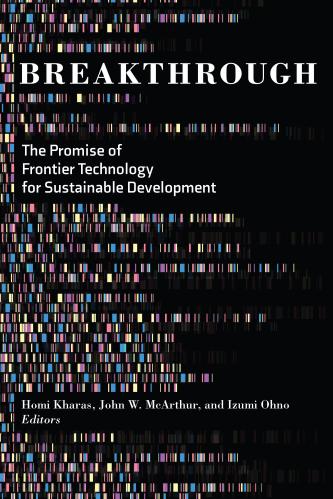
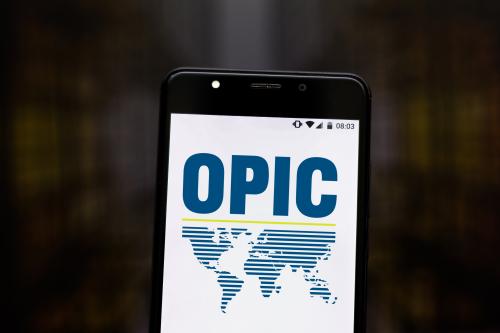
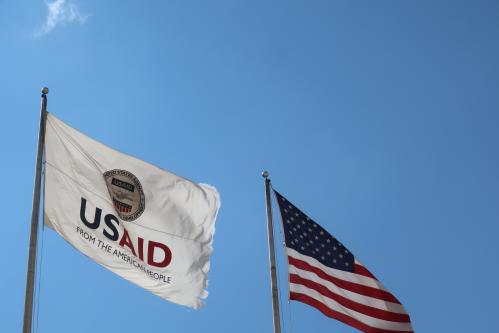



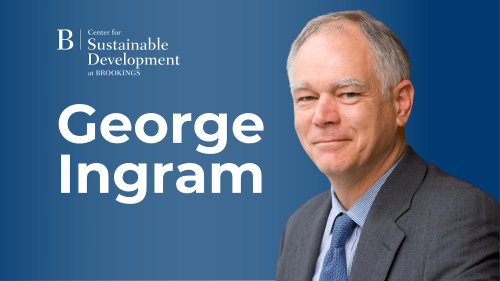
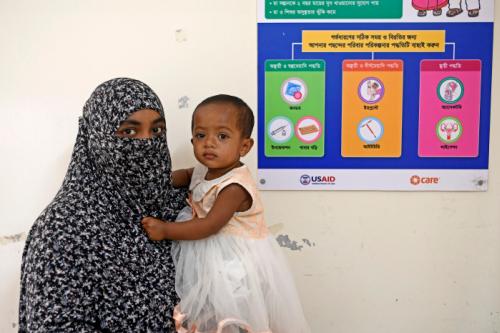
Commentary
Upcoming DAC peer review is an opportunity to advance US development goals
January 19, 2022